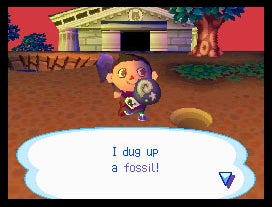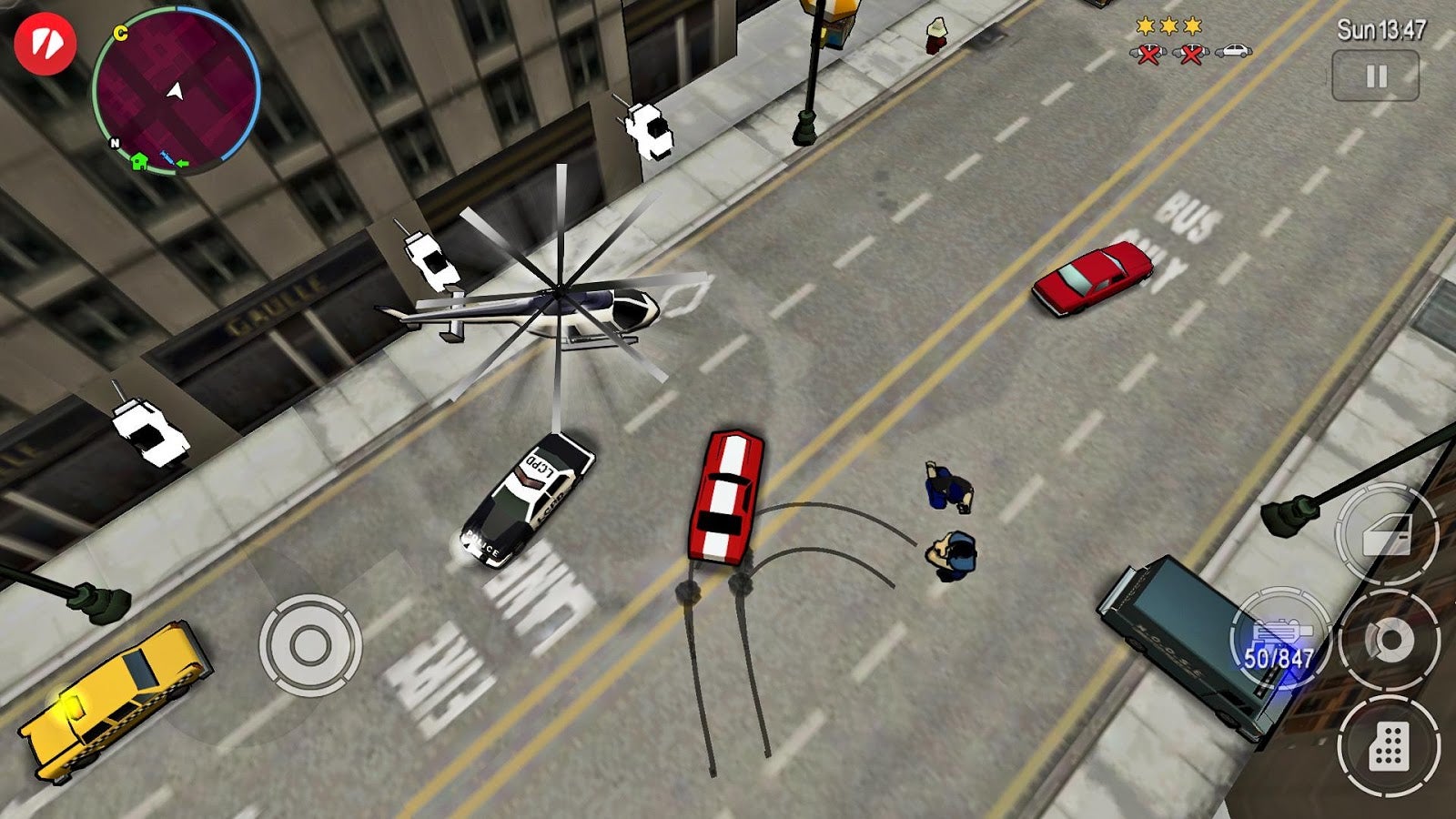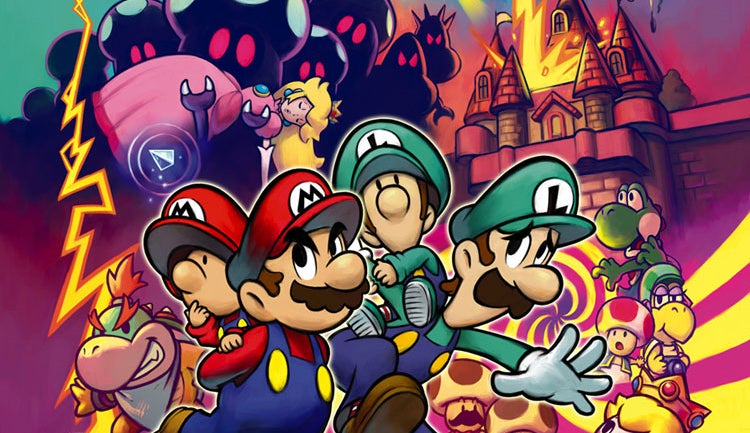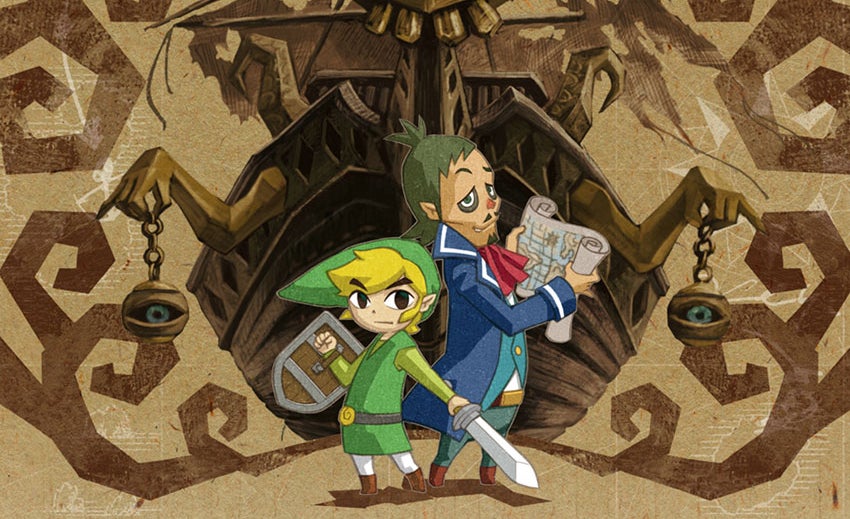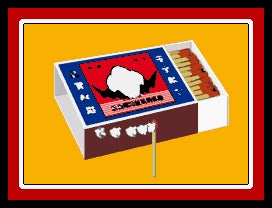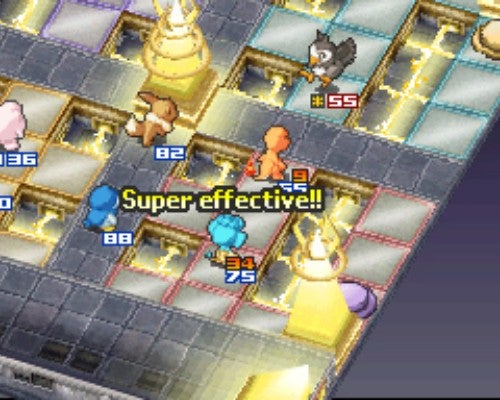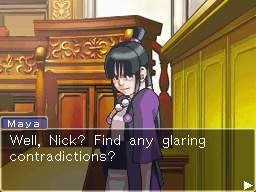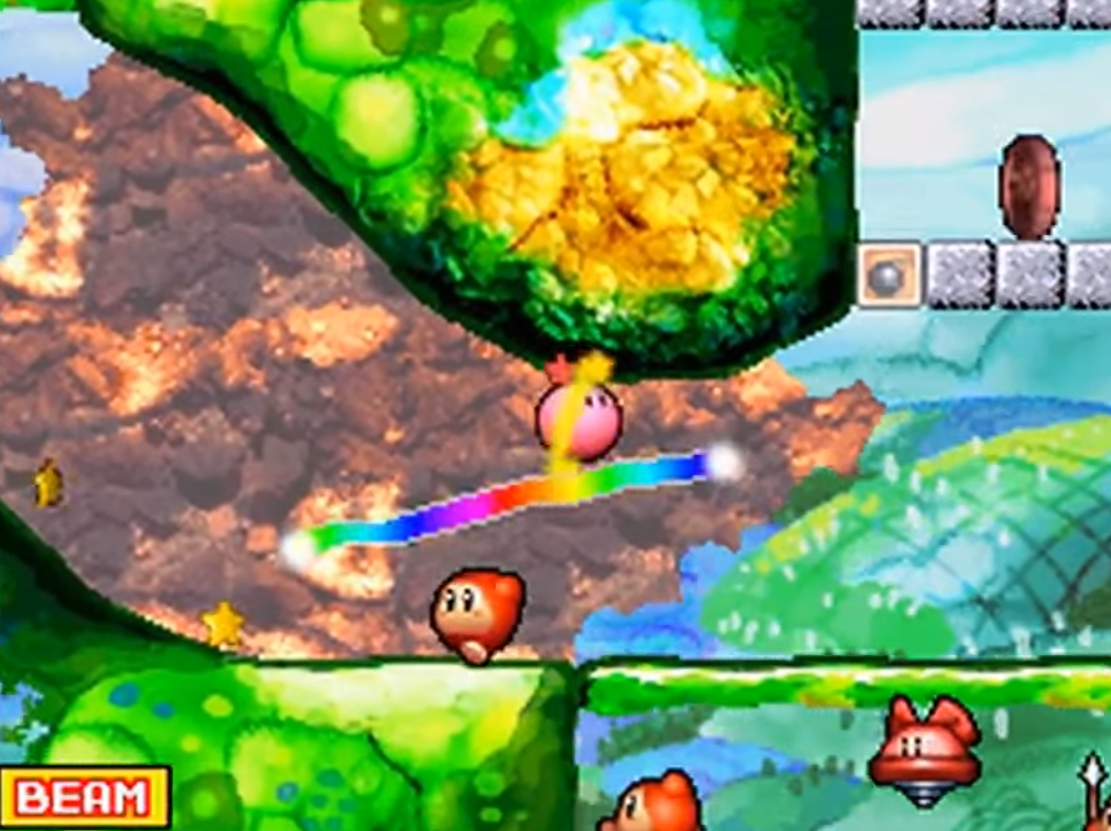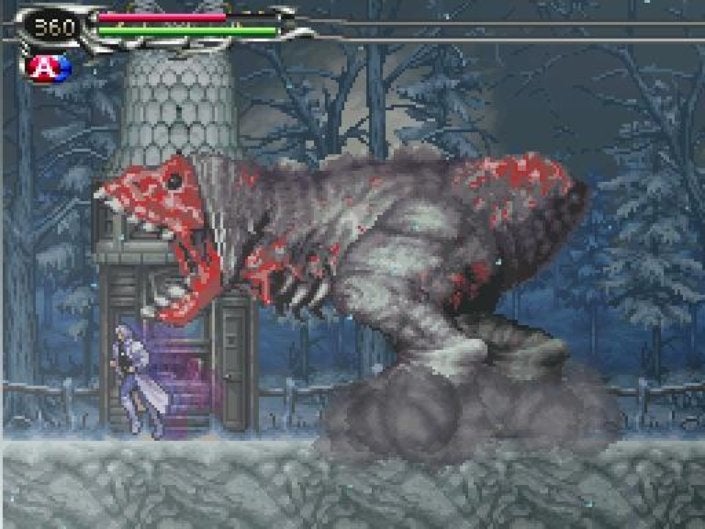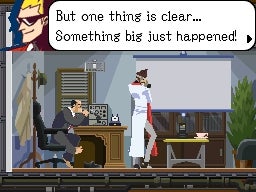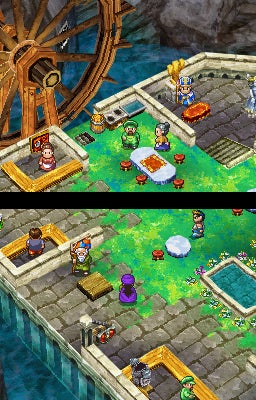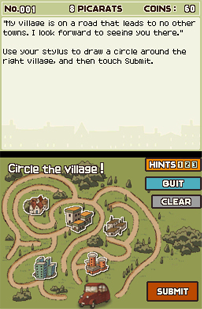The NDS is no doubt the defining console of my childhood, and undoubtedly many others. Don’t get me wrong, I wasted away many hours on the family Dreamcast, N64 and PS2 as a child, but the NDS was the first console I could truly call my own. Often, my NDS will be picked up again, so I can spend some time catching Pokémon, revisiting Kirby games, or racing around the tracks of Mario Kart DS. With an innovative (at the time) dual-screen on offer and a stylus that begged to be used, the NDS had a huge library of games spanning across every genre, resulting in over 2000 games for owners to choose from. My parents had the right idea getting me an NDS, I simply never had to bother them again - apart from every time I wanted the next in a long line of exciting new games. That said, what are the best DS games from this huge library? Admittedly, due to the huge variety I can only scratch the surface in this list, but here are 20 of the best DS games in no particular order.
Animal Crossing: Wild World Grand Theft Auto: Chinatown Wars Mario Kart DS The World Ends With You Mario & Luigi Partners in Time New Super Mario Bros. Hotel Dusk: Room 215 Viva Piñata: Pocket Paradise The Legend of Zelda: The Phantom Hourglass WarioWare Touched! Pokémon Conquest Chrono Trigger Phoenix Wright: Ace Attorney Kirby: Canvas Curse Castlevania: Dawn of Sorrow Ghost Trick: Phantom Detective 999: Nine Hours, Nine Persons, Nine Doors Dragon Quest V: Hand of the Heavenly Bride Elite Beat Agents Professor Layton and the Curious Village Honourable Mentions
Animal Crossing: Wild World
Released: 2005 Developer: Nintendo
Animal Crossing took the (wild) world by storm when the series came to Nintendo Switch at the height of the Covid pandemic, and with good reason. Who doesn’t want to flee the shackles of reality by instead being in debt to Tom Nook? The answer is an alarming amount of people, but did you know that Animal Crossing’s NDS instalment is almost just as good? If you’ve already exhausted New Horizons, or simply don’t have a Switch to play it on, it’s still worth picking up Wild World. The DS game is privy to plenty of typical Animal Crossing charm, but also is a great opportunity to go and discover the goodies and characters that didn’t quite make it to New Horizons. One such character is the infamous Mr. Resetti, the mole who gets annoyed with you for not saving your game!
Grand Theft Auto: Chinatown Wars
Released: 2009 Developer: Rockstar Games
Nintendo, and many of the games on its systems, are typically family friendly. I present to you Grand Theft Auto: Chinatown Wars, which is perhaps about as mature as it can get on the NDS. Chinatown Wars plays out differently to other Grand Theft Auto titles, and will have you — Huang Lee — dealing drugs, repeatedly, as you bid to claim back a family heirloom. The tension is there, and honestly, Chinatown Wars and its explosive missions make for a fun experience when paired with the mechanics on the NDS. Stealing cars requires careful hot-wiring on your touch-screen, and calling a taxi means whistling into the systems’ microphone. They’re small touches, but really make the top-down GTA game a hell of a lot more immersive, and prove that the NDS is so much more capable than some may think.
Mario Kart DS
Released: 2005 Developer: Nintendo
Mario Kart DS was the fifth instalment in the racing series, and it was rather forward-thinking at the time, too. Of all the titles before it, it was the first to introduce worldwide online play. This never went off without a hitch, or ten, but when it worked, it was good fun. The DS rendition of Mario Kart also saw the introduction of two new items, one of which is my saving grace in Mario Kart 8 Deluxe: the Bullet Bill, and the Blooper. Throughout the game are 16 new tracks to race around, plus 16 retro tracks plucked from previous consoles, including personal favourite Banshee Boardwalk (N64). Without the Wi-Fi functions, it does feel like Mario Kart DS is missing some of its charm in the present day. Especially when there are newer, shinier karting titles to try out on the go. However, it’s certainly worth revisiting on occasion solely for all those tracks.
The World Ends With You
Released: 2008 Developer: Jupiter
The World Ends With You takes place in Shibuya, one of Tokyo’s most famous shopping districts, and it looks just as cool as you’d expect. This RPG is incredibly stylish, and the only bad thing we have to say about it is that there wasn’t a series off the back of it, but maybe that’s a good thing. What makes The World Ends With You all the more impressive is that it was incredibly ambitious. Square Enix could’ve easily overseen another Kingdom Hearts or Final Fantasy title, but it took a chance with Jupiter’s unique RPG, leading to the incredibly nifty The World Ends With You. The game makes full use of the NDS hardware, utilising the dual-screen in combat, and as a result, doesn’t quite hit the same on other platforms. So, if you’ve never checked this one out and still have your NDS or an emulator, it’s well worth playing.
Mario & Luigi Partners in Time
Released: 2005 Developer: Nintendo
This particular Mario game is a sequel to the wonderful Game Boy Advance title, Mario & Luigi: Superstar Saga, and it gets even wackier this time around. In Partners in Time, Mario and Luigi must obviously save Princess Peach again, but they’ve got the help of their counterparts, which just so happen to be baby versions of themselves. It’s a game my Dad and I regularly troubled ourselves with when I was younger, but we couldn’t put it down regardless. It felt like a more challenging Mario game, and was filled to the brim with weirdness and an excellent soundtrack from Yoko Shimomura that I was definitely too young to fully appreciate the first time around. As you fight with invaders from space, that also take the form of evil mushrooms, Mario & Luigi Partners in Time feels incredibly chaotic, but for all the right reasons.
New Super Mario Bros.
Released: 2006 Developer: Nintendo
New Super Mario Bros marks a pretty big time for the series. When it was released in 2006, it had actually been twelve years since the series had seen a new 2D game. We did get Super Mario 64 and Super Mario Sunshine in the meantime, but obviously they branched into more 3D gameplay. So, New Super Mario Bros. understandably was a staple on many NDS systems, my own included. Not only did you get to engage in fresh Mario fun, navigating worlds in a top-down home menu before jumping into vibrant, revived platforming levels, but the mini-games here were a blast too. So much so, that I might’ve got very passionate about them in one of VG247’s podcast episodes. Beyond your standard Mario, there are dozens of multiplayer and single-player mini-games, some old and some new. Either way, this game just doesn’t stop being fun, even over a decade later.
Hotel Dusk: Room 215
Released: 2007 Developer: Cing
Developer, Cing, have since called it quits after filing for bankruptcy back in 2010, but they left themselves an illusive legacy with Hotel Dusk: Room 215. This point-and-click adventure has you solving puzzles and piecing together a mystery surrounding the mysterious Room 215. The game was played vertically, with your NDS often resembling a detective’s notebook, really making you feel as though you’re the one cracking this case. A young me was often perplexed by what I was supposed to do a lot of the time, but having revisited the game years later (and a few Resident Evil titles later), I was finally able to appreciate Hotel Dusk and all of its puzzles. The puzzles are not all there is to appreciate when it comes to Hotel Dusk, but the animation technique too: rotoscoping. This isn’t commonly used in games, for good reason, but it looks incredible in Hotel Dusk and in an NDS game altogether.
Viva Piñata: Pocket Paradise
Released: 2008 Developer: Rare
While the NDS version of Viva Piñata lacks a couple of elements the original game had, it’s still an authentic Viva Piñata experience nonetheless. Its soundtrack is also composed by none other than David Wise, whose melodies also accompanied Donkey Kong Country 2: Diddy Kong’s Quest, which is one of the best video game soundtracks ever made. So that’s a plus. The entire game makes use of the NDS’ stylus and touch screen, and in the simulator, you get to tend to your garden, as well as your piñatas. The top screen is then used to display an information panel with everything you need to know at that moment in time for your garden, which is a feature unique to this version of the game, and a very useful one. I vividly remember spending hours as a child trying to make my Piñatas breed, and rejoicing when they did. You could be a gardener on the go, and Viva Piñata entertained me a lot more than any other simulation games on the NDS at the time.
The Legend of Zelda: The Phantom Hourglass
Released: 2007 Developer: Nintendo
Choosing between Spirit Tracks and Phantom Hourglass wasn’t easy, but ultimately, the latter utilises the NDS’ hardware a touch more and is why it makes this list. In Phantom Hourglass, Link is controlled by the stylus and touch-screen as he embarks on rescuing his friend Tetra. Throughout the game, you’ll be able to explore various islands on foot as Link, while also spending some time physically sailing between them. All combat is dealt with strokes of your stylus, and in typical NDS fashion, feels incredibly satisfying as a result. While Zelda’s NDS ventures lack the charm of the Game Boy titles, and even Breath of the Wild, the NDS system itself really elevates Phantom Hourglass. It feels like a unique instalment in the series as a result, and therefore, well worth playing.
WarioWare Touched!
Released: 2005 Developer: Nintendo
WarioWare consists of dozens of mini-games that all focus on using the touch screen and stylus, and they’re all incredibly stylish. While this game is overall rather similar to its predecessors for the Game Boy Advance and Game Cube, once again it’s the handheld system that allows this game to shine. One moment, you’re scrambling with wires to power a battery, the next you’re swatting flies left, right, and centre. Once you’re done with a level, you even unlock toys. These toys are just more mini-games, typically based on the ones you’ll encounter in each level, but they certainly entertained me as a child as I bid to collect them all. I never did collect them all, and that’s solely because of how many DS games were available to capture my attention at any given moment. However, the silly nature of WarioWare: Touched! certainly kept plenty of kids amused, myself included.
Pokémon Conquest
Released: 2012 Developer: Tecmo Koei
Pokémon Black and White might be the peak for the series’ NDS titles, but Pokémon Conquest is probably one of the best-loved Pokémon spin-offs out there. I don’t need to tell you to play a mainline Pokémon game, thus, Conquest gets a spot here instead. The RPG, which focuses on collecting monsters galore, is combined with careful turn-based strategy. Your Pokémon can only use one move, determined by their species, and not all 649 Pokémon available at the time were featured in the game. That said, there’s still a strong selection of ‘mons, and seeing them fight alongside the Warriors and Warlords of Feudal Japan as they attempt to reunite the Ransei region feels incredibly fitting, and equally rewarding. It’s so good, in fact, that many have been asking for a remake of the game to be brought to Nintendo Switch for a while now. It’s yet to happen, so picking up an NDS copy is your best way of checking this game out.
Chrono Trigger
Released: 2008 Developer: Square
Chrono Trigger is one RPG that has truly stood the test of time. First released for the SNES in 1995, the game later came to PlayStation in 1999, and then Nintendo DS in 2008. It was even ported to PC in 2018. The game itself places you into a 2D world, and gameplay has you traversing various areas - forests, dungeons, and more - as you fight with enemies, solve puzzles, and gather items. For those who are fans of RPGs, especially those from Square Enix, it’s a must-play. The NDS version was a faithful rerelease of the SNES original, with all the enhancements that the PlayStation version had, plus a few other tweaks. These included improved translations, more dungeons, and even an additional ending. You can also play the NDS game using SNES controls if you’d like, which is a nice touch.
Phoenix Wright: Ace Attorney
Released: 2005 Developer: Capcom
Phoenix Wright: Ace Attorney absolutely scratches an itch for those of who find true crime fascinating, but are too scared to actually read into it or watch the documentaries that people rave on about. That might be a bold claim, but that’s what these games are to me. They’re definitely comical in areas, and much more lively and colourful than any true-crime documentary, but they whisk you away into the shoes of a detective in the courtroom. In the visual novel style of game, you’re the one who must piece together clues or tear them apart. You can even audibly shout your ‘Objection’ into the NDS mic, turning your NDS into the courtroom itself. These games are best played on the handheld, even today.
Kirby: Canvas Curse
Released: 2005 Developer: HAL Laboratory
While I am slightly upset with myself for not mentioning Kirby Super Star Ultra on this list, or even Squeak Squad, Kirby: Canvas Curse is the better DS game, solely for its utilisation of the stylus and touch-screen. Throughout Canvas Curse, you’ll be manoeuvring Kirby through their typical levels filled with platforms and Waddle Dee’s, but another mechanic is introduced. Kirby sometimes needs the help of a stylus-drawn platform to get them around each level. I replayed a bit of Kirby Canvas Curse recently, and was a little surprised at how difficult it could be to get my hand-drawn routes right sometimes. The Kirby series is known for its accessibility and ease, so don’t expect anything too damning, but Canvas Curse certainly poses a fun, artistic challenge with our favourite pink puff ball at the forefront.
Castlevania: Dawn of Sorrow
Released: 2005 Developer: Konami
There are three Castlevania titles for Nintendo DS, and while they’re all worth playing if you’re into them, Dawn of Sorrow arguably is the best for the handheld system. It wasn’t a revolutionary game for the series’ by any stretch, but it did feature the Tactical Soul system from Aria of Sorrow, it’s predecessor. This, in combination with a Magic Seal system, gave players a wealth of strategies to use and allowed them to take down a boss with the use of the stylus. The Magic Seal system simply wouldn’t have been possible on any other device at the time, and with the game mastering the gloomy, gothic feeling that all Castlevania games are privy too, it also looked great. Let’s not also forget the fact that Castlevania games undoubtedly have some of the best soundtracks going, and this particular instalment is scored by Masahiko Kimura and Michiru Yamane.
Ghost Trick: Phantom Detective
Released: 2010 Developer: Capcom
Ghost Trick: Phantom Detective certainly borrows a lot from the Phoenix Wright: Ace Attorney series, which makes sense considering Shu Takumi - creator of the Ace Attorney series - led development of this particular adventure. And considering how good Ace Attorney is, this isn’t a bad thing whatsoever. During Ghost Trick, you play as a ghost named Sissel, and must use your abilities in an attempt to save the lives of others. In both the land of the living, and the ghost world where all time is stopped, you’ll be able to possess various items as you go about solving crimes. Then, you may even be able to go back in time to prevent the crime from ever occurring. It’s a unique game with an interesting premise, quality storytelling, and some very entertaining puzzles (and crimes) for you to actively solve.
999: Nine Hours, Nine Persons, Nine Doors
Released: 2009 Developer: Chunsoft
999: Nine Hours, Nine Persons, Nine Doors was, arguably, rather pivotal for the visual novel genre of game. While there had been plenty before it, none of them seemed to capture audiences like 999 did, which led to the game feeling essential to how the genre has grown and transformed since. 999 follows the story of nine strangers who are all stuck on a cruise ship. Doesn’t sound too bad, right? Well, everyone here has been taken aboard the ship by kidnappers. As if it couldn’t get any worse, the ship is also sinking. This then leads to a wealth of puzzles, and perhaps the ultimate escape-the-room title, as you play through this human experiment and try to find a way out. Critics were rather mixed on whether the game felt too easy or too complex; regardless, most were in agreement that 999 popularised the visual novel genre, was packed with content, and was, overall, a satisfying experience. It also had the rare M rating, something you don’t often see plastered on NDS games.
Dragon Quest V: Hand of the Heavenly Bride
Released: 2007 Developer: ArtePiazza
Dragon Quest certainly didn’t get off to the best start across the west, but as soon as more players slowly began to pick up the remake for the NDS’ and delve into the fantastical RPG, it became one of the most beloved franchises out there. This particular game is praised for its storytelling and its future influence on modern games, and while the interface is far from perfect, Dragon Quest V is still arguably one of the best RPG experiences for your NDS. Throughout Dragon Quest V, you’ll follow the hero of the tale throughout their lifetime, all while participating in turn-based battles and collecting various monsters to join your party. At the same time, you get to revel in a classic story that spans decades.
Elite Beat Agents
Released: 2006 Developer: iNiS
Elite Beat Agents is the later, westernised version of Osu! Tatakae! Ouendan, and if you can, I recommend playing both. Osu! Tatakae! Ouendan is deeply influenced by Japanese culture and music, so much so that Nintendo did not think it would be feasible to localise the game. As a result, Elite Beat Agents was created. Elite Beat Agents sees you rhythmically tapping away to the likes of Queen, Sum 41 and even Destiny’s Child. While it’s certainly no competition for Guitar Hero, it still feels incredibly satisfying to jam away using your stylus while also supposedly helping people in need. That’s what Elite Beat Agents do, apparently! Meanwhile, if you can get your hands on it, Osu! Tatakae! Ouendan is host to similar gameplay. It lacks a few features here and there, but it’s so worth it to be able to rhythmically play along with some covers of iconic J-pop artists.
Professor Layton and the Curious Village
Released: 2007 Developer: Level-5
The Professor Layton series consists of six mainline games for the NDS and 3DS, so if you find that you’re a fan, the fun need not stop for a good while. It all kicked off with the Curious Village, and each of these games certainly tells a curious story, one in which you must piece together yourself. Professor Layton is the perfect game for NDS, and even it’s Switch successor didn’t quite hit the same. While the story plays out on your top screen, you’ll be solving puzzles and finding clues using your touch-screen and stylus, and it’s games like these that showcase just how nifty the NDS is. Curious Village will introduce you to Professor Layton, and his apprentice, Luke Triton, as they work to uncover a mysteriously missing heirloom. There are plenty of riddles, brain-teasers, and traditional puzzles to solve as you crack the case, and each of them are incredibly unique.
Honourable Mentions
Viewtiful Joe, Pokémon HeartGold and SoulSilver, Pokémon Black & White, Harvest Moon, Kirby Super Star Ultra, Mario and Luigi: Bowser’s Inside Story, The Legend of Zelda: Spirit Tracks, Kirby: Squeak Squad, Castlevania: Order of Ecclesia, Dragon Quest IV and VI remakes, Dragon Quest IX: Sentinels of the Starry Skies, Tetris DS, Advance Wars: Dual Strike, Pokémon Mystery Dungeon: Explorers of Sky, Fire Emblem: Shadow Dragon, Rune Factory 3, Rocket Slime, Super Mario 64 DS, Mega Man Zero Collection For more on some of the best games out there, try out some of the best co-op titles of all time, or take a look at what the best games available on Game Pass are. Alternatively, how about the best VR games?
